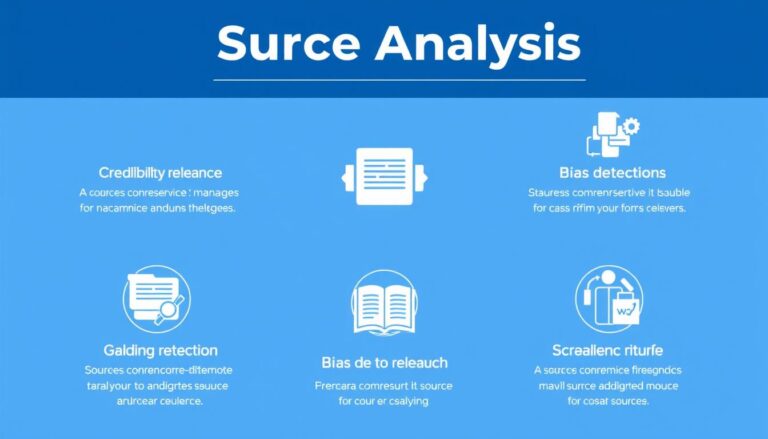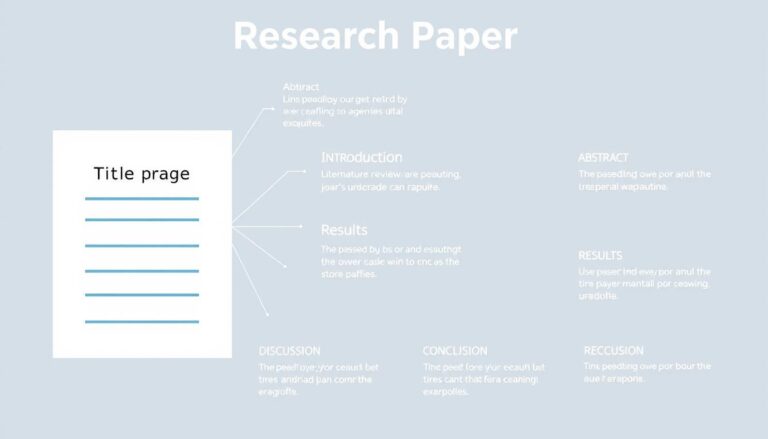Delving into the world of academic research, it’s essential to understand the significance of related academic work in shaping our understanding of various subjects.
By exploring the broader scope of research conducted by authors and contributors, readers can gain a more comprehensive insight into the topics that interest them.
This section aims to provide an overview of the various publications that have contributed to the field, highlighting the importance of examining the work of renowned researchers.
Key Takeaways
- Understanding the significance of related academic work in research.
- Exploring the broader scope of research conducted by authors and contributors.
- Gaining comprehensive insights into topics of interest.
- Examining the work of renowned researchers in the field.
- Appreciating the importance of diverse publications in shaping our understanding.
The Expanding Universe of Academic Work
The realm of academic work is vast and ever-expanding, much like the universe itself. As new discoveries are made and more researchers contribute to their fields, the body of published research grows, offering a richer understanding of various subjects.
Exploring this vast landscape is crucial for anyone involved in academic pursuits. It allows researchers to contextualize their work within the broader spectrum of related academic work.
Why Exploring Related Research Matters
Understanding the significance of related research is fundamental. It helps in identifying gaps in current knowledge, fosters innovation, and ensures that new research builds upon existing foundations. By exploring related academic work, researchers can avoid duplication of efforts and contribute meaningfully to their field.
Building a Comprehensive Knowledge Base
A comprehensive knowledge base is the backbone of any research field. It is built by synthesizing findings from various studies and published research. This synthesis not only enhances our understanding but also guides future research directions. By engaging with related academic work, scholars can develop a nuanced view of their research area.
Types of Other Publications You Should Know
The academic landscape is diverse, with numerous types of publications that researchers should be aware of. These publications not only expand our understanding of various subjects but also contribute to the richness of academic discourse.
Peer-Reviewed Journal Articles
Peer-reviewed journal articles are a cornerstone of academic publishing. They are rigorously vetted by experts in the field before publication, ensuring their quality and validity. For more information on submitting to peer-reviewed journals, researchers can visit Nature’s author guidelines.
Books, Monographs and Edited Collections
Books, monographs, and edited collections provide in-depth analysis and comprehensive coverage of topics. They are valuable resources for both researchers and students, offering detailed insights into specific areas of study.
Conference Papers and Proceedings
Conference papers and proceedings are critical for disseminating research findings and fostering collaboration among researchers. They often present cutting-edge research and emerging trends in various fields.
Preprints and Working Papers
Preprints and working papers allow researchers to share their findings quickly, facilitating early discussion and feedback. They are particularly useful in rapidly evolving fields where timely dissemination of information is crucial.
Understanding these different types of publications can significantly enhance a researcher’s ability to stay informed and contribute to their field effectively.
| Type of Publication | Description | Characteristics |
|---|---|---|
| Peer-Reviewed Journal Articles | Rigorous research vetted by experts | High quality, validity, and reliability |
| Books and Monographs | In-depth analysis and comprehensive coverage | Detailed insights, authoritative |
| Conference Papers and Proceedings | Cutting-edge research and emerging trends | Timely, collaborative, and innovative |
| Preprints and Working Papers | Early dissemination of research findings | Rapid sharing, early feedback |
Navigating Digital Repositories for Hidden Gems
In the digital age, repositories have become crucial for accessing a broad spectrum of related academic work and other publications. These digital libraries are not just storage facilities; they are gateways to a wealth of information that can significantly enhance research quality.

University and Institutional Archives
University and institutional archives are treasure troves for researchers. They contain a vast array of documents, including theses, dissertations, research papers, and historical records. For instance, the University of Melbourne’s Archives hold extensive collections that provide insights into various fields of study. By exploring these archives, researchers can uncover unique perspectives and related academic work that might not be readily available elsewhere.
Subject-Specific Digital Collections
Subject-specific digital collections are another valuable resource. These collections are curated to include works and data relevant to specific fields of study, making it easier for researchers to find pertinent information. As noted by a leading researcher, “Digital collections have revolutionized the way we access information, making it possible to conduct comprehensive reviews without geographical constraints.” Leveraging these collections can significantly enhance the depth and breadth of one’s research, providing access to a wide range of other publications.
Leveraging Citation Networks to Discover Related Work
Citation networks provide a valuable tool for identifying other publications that are relevant to one’s research. By analyzing the citations within a particular publication, researchers can uncover a wealth of related studies and expand their understanding of the research landscape.
Forward Citation Tracking Techniques
Forward citation tracking involves identifying publications that have cited a particular work. This technique allows researchers to trace the impact and evolution of a study over time. By examining forward citations, researchers can discover new and relevant published research that has built upon earlier findings.
Backward Citation Analysis Methods
Backward citation analysis, on the other hand, involves examining the citations within a publication to identify its intellectual antecedents. This method provides insight into the research that has influenced a particular study. By analyzing backward citations, researchers can gain a deeper understanding of the historical context and development of their research area.
| Citation Analysis Method | Description | Benefits |
|---|---|---|
| Forward Citation Tracking | Identifying publications that cite a particular work | Discovers new and relevant research, traces impact over time |
| Backward Citation Analysis | Examining citations within a publication | Provides insight into intellectual antecedents, historical context |
Exploring an Author’s Complete Body of Work
An author’s complete body of work offers a rich tapestry of research that can significantly enhance academic inquiry. By examining the entirety of an author’s publications, researchers can gain a deeper understanding of their contributions to their field.
Academic Profiles on Research Platforms
Academic profiles on research platforms such as Google Scholar, ResearchGate, and Academia.edu provide a comprehensive overview of an author’s published research. These platforms often include citation metrics, co-authorship networks, and links to full-text publications, making it easier to assess the impact and relevance of an author’s work.
Personal and Departmental Websites
Many academics maintain personal or departmental websites that list their publications, research interests, and other professional activities. These websites can be a valuable resource for discovering related academic work and understanding an author’s research trajectory.
CV and Publication Lists
An author’s CV and publication lists can provide a detailed record of their research output. These documents often include comprehensive lists of publications, presentations, and other academic achievements, offering insights into the breadth and depth of an author’s contributions.
Finding and Accessing Other Publications in Open Access Formats
Open access formats have revolutionized the way we access related academic work. By making research freely available, open access initiatives have significantly reduced barriers to knowledge sharing. This section will explore how to find and access other publications through major open access repositories and journals.
Major Open Access Repositories
Major open access repositories play a crucial role in hosting and disseminating research findings. Some prominent examples include:
- arXiv: A leading repository for electronic preprints in physics, mathematics, computer science, and related disciplines.
- PubMed Central: A key repository for biomedical literature.
- DOAJ (Directory of Open Access Journals): A comprehensive index of open access journals.
These repositories provide a wealth of related academic work that can be accessed freely, enhancing the visibility and impact of research.
Navigating Open Access Journals
Navigating open access journals requires an understanding of their publication models and quality assurance processes. Many open access journals are peer-reviewed, ensuring the quality and validity of the research they publish. When searching for other publications, consider using directories like DOAJ to find reputable open access journals in your field.
| Repository/Journal | Discipline | Access Type |
|---|---|---|
| arXiv | Physics, Mathematics, Computer Science | Open Access |
| PubMed Central | Biomedical Literature | Open Access |
| DOAJ | Multidisciplinary | Open Access Directory |

Interdisciplinary Connections: Bridging Research Fields
Exploring the connections between different fields of study can enrich our understanding of published research and lead to new insights. As research becomes increasingly specialized, the importance of interdisciplinary connections cannot be overstated.
Identifying Cross-Disciplinary Work
Identifying cross-disciplinary work involves looking beyond the boundaries of a single field to discover relevant other publications. This can be achieved by searching academic databases using keywords from multiple disciplines or by exploring the work of researchers who collaborate across fields.
Thematic Connections Across Disciplines
Thematic connections across disciplines can reveal common underlying themes or methodologies that transcend individual fields. By recognizing these connections, researchers can develop a more comprehensive understanding of their subject matter and identify new areas for investigation.
For instance, the study of climate change is an area where interdisciplinary connections are particularly valuable, drawing on insights from environmental science, economics, and social policy to develop effective solutions.
Collaborative Networks and Co-Authorship Patterns
As research becomes more interdisciplinary, understanding collaborative networks and co-authorship patterns is crucial for navigating the academic landscape. Collaborative networks have revolutionized the way research is conducted, leading to more comprehensive and impactful outcomes.
Mapping Research Teams and Partnerships
Mapping research teams and partnerships involves analyzing the structure and dynamics of collaborative networks. This can be achieved through social network analysis, which helps identify key researchers, institutions, and their roles within the network.
Understanding Institutional Collaborations
Institutional collaborations are vital for advancing research, as they facilitate the sharing of resources, expertise, and risk. Understanding these collaborations can provide insights into how different institutions contribute to related academic work.
International Research Partnerships
International research partnerships have become increasingly important in the globalized academic landscape. These partnerships enable researchers to tackle complex problems that require diverse perspectives and expertise, ultimately enhancing the quality and impact of published research.
| Collaboration Type | Description | Benefits |
|---|---|---|
| Research Teams | Groups of researchers working together on a project | Innovative solutions, shared workload |
| Institutional Collaborations | Partnerships between different institutions | Resource sharing, enhanced credibility |
| International Partnerships | Collaborations across national borders | Diverse perspectives, global impact |
By examining collaborative networks and co-authorship patterns, researchers can better understand the complex dynamics driving related academic work and published research. This knowledge can inform strategies for fostering more effective collaborations and improving research outcomes.
Australian Research Landscape and Publications
Exploring the Australian research landscape reveals a plethora of publications that have a significant impact on various fields of study. The country’s academic output is diverse, ranging from peer-reviewed journal articles to books and conference proceedings.
Major Australian Academic Publishers
Several key players dominate the Australian academic publishing scene. Major publishers include the Australian Academic Press, Melbourne University Publishing, and the University of Queensland Press. These publishers play a crucial role in disseminating research findings to both local and international audiences.
| Publisher | Notable Publications | Field of Focus |
|---|---|---|
| Australian Academic Press | Journal of Australian Studies | Interdisciplinary Studies |
| Melbourne University Publishing | Melbourne Journal of International Law | International Law |
| University of Queensland Press | Australian Literary Studies | Literary Studies |
Australian Research Council (ARC) Funded Work
The Australian Research Council (ARC) is a significant funding body for research in Australia. ARC-funded projects result in a wide range of publications, including journal articles, conference papers, and research monographs. These publications are often considered high-quality research outputs due to the rigorous peer-review process associated with ARC funding.
Accessing Australian Research Databases
Researchers can access Australian research publications through various databases. Key databases include the Australian Research Council’s Discovery database and the Trove database provided by the National Library of Australia. These databases offer a wealth of information on Australian research outputs.
Evaluating the Quality and Impact of Other Publications
Critically evaluating other publications is essential for maintaining the integrity of research. As the academic landscape continues to evolve, understanding the quality and impact of published research becomes increasingly important. This evaluation not only helps researchers identify credible sources but also informs their own research direction.
Understanding Traditional Impact Metrics
Traditional impact metrics, such as citation counts and journal impact factors, have long been used to gauge the influence of research publications. Citation counts indicate how often a publication has been cited by other researchers, reflecting its relevance and impact within the field. Journal impact factors, on the other hand, measure the average number of citations received by papers published in a particular journal, providing insight into the journal’s prestige and standing.
Alternative Metrics for Research Influence
In recent years, alternative metrics (altmetrics) have emerged to provide a more comprehensive view of research influence. Altmetrics encompass a range of indicators, including social media mentions, downloads, and views. These metrics offer insights into how research is being consumed and discussed beyond traditional academic circles.
Assessing Relevance to Your Research
Assessing the relevance of other publications to your own research is a critical step in the evaluation process. This involves analyzing how the publication’s findings, methodologies, or theoretical frameworks align with or challenge your research objectives. Creating a table to compare key aspects of relevant publications can facilitate this assessment.
| Publication | Research Focus | Methodology | Relevance to Your Research |
|---|---|---|---|
| Publication A | Climate Change Impacts | Quantitative Analysis | Highly relevant due to similar research questions |
| Publication B | Policy Interventions | Qualitative Analysis | Relevant for contextual understanding |
| Publication C | Technological Innovations | Mixed Methods | Moderately relevant for methodological insights |
By systematically evaluating the quality and impact of other publications, researchers can make informed decisions about the credibility and relevance of the research they engage with.
Staying Current with New Other Publications
Keeping abreast of the latest research is vital for academics. In today’s fast-paced academic environment, new publications emerge constantly, making it challenging to stay informed. Researchers must adopt effective strategies to stay current with related academic work and published research.
Setting Up Automated Publication Alerts
One effective way to stay updated is by setting up automated publication alerts. Many academic databases and search engines offer alert services that notify users via email when new publications match their search criteria. By utilizing these alerts, researchers can stay informed about the latest published research in their field without having to constantly search for new content.
Following Key Authors and Research Groups
Following key authors and research groups is another strategy for staying current. By monitoring the work of influential researchers and groups, academics can gain insights into the latest developments and trends in their field. This can be done through academic social networks, personal websites, or institutional profiles.
Leveraging Academic Social Networks
Academic social networks provide a platform for researchers to share and discover new publications. By leveraging these networks, academics can stay updated on the latest related academic work and engage with other researchers in their field. Popular platforms include Academia.edu and ResearchGate, where users can follow other researchers and be notified about their new publications.
By implementing these strategies, researchers can ensure they remain informed about the latest developments in their field, ultimately enhancing their research and contributing to the advancement of knowledge.
Conclusion: Maximising the Value of Other Publications in Your Research Journey
Exploring other publications is crucial for a comprehensive understanding of related academic work and published research. By delving into the wealth of information available through various channels, researchers can uncover new insights, foster collaborations, and stay updated on the latest developments in their field.
The strategies outlined in this article, from navigating digital repositories to leveraging citation networks and open access formats, provide a robust framework for discovering and accessing relevant publications. By applying these strategies, researchers can enrich their knowledge base, identify potential collaborators, and enhance the impact of their work.
As the academic landscape continues to evolve, the ability to effectively locate and utilize other publications will remain a vital skill for researchers. By embracing the approaches discussed, scholars can maximize the value of published research and contribute to the advancement of their field.





